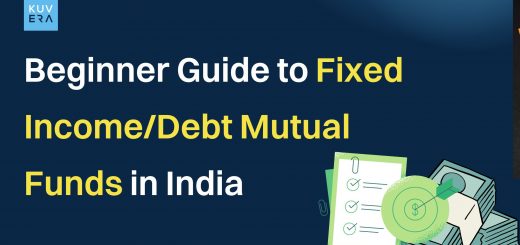Total Expense Ratio (TER) Definition
Total Expense Ratio (TER) or Expense Ratio can be defined as an annual fee or charge that a mutual fund charges to the scheme and in turn, to its investors.
It includes various charges like management fee, administrative cost, trading & brokerage and other operating expenses, audit fee, legal fee, sales & marketing expenses etc.
It is expressed as a factor of the fund’s net assets on a daily basis. (in percentage terms)
When trillions of dollars are managed by Wall Streeters charging high fees, it will usually be the manager who reap outsized profits, not the clients. Both large and small investors should stick with low-cost index funds.
: Warren Buffett, Chairman, Berkshire Hathaway, 2017 – Shareholder Letter
Calculation
Total Expense Ratio = Total Fund Expenses / Assets Under Management (AUM) of the Fund
For example – XYZ Equity Fund has total Assets under Management of INR 50 crores.
Total expenses (administration, management fee etc) for managing the fund = INR 1 crore
Total Expense Ratio = 1 Crore / 50 Crores
Total Expense Ratio = 2 %
Total Expense Ratio and Investor returns
The actual return for an investor from a scheme is to be arrived at by deducting the TER from its total returns.
For example – Mr X invested INR 5,00,000 last year in XYZ Equity Fund. The TER for the fund is 2%. Thus, out of INR 5,00,000 invested by Mr X, INR 10,000 will go towards expenses. ( This also means that only INR 4,90,000 was available for investment )
If, during the year, the return for this fund was 12%, it means the actual return for Mr X was 10%.
Most institutional and individual investors will find the best way to own common stock is through an index fund that charges minimal fees. Those following this path are sure to beat the net results [after fees and expenses] delivered by the great majority of investment professionals.: Warren Buffett, Chairman, Berkshire Hathaway, 1996 – Shareholder Letter
Total Expense Ratio and Net Asset Value
The Net Asset Value (NAV) of a scheme is calculated every day after deducting the total expenses incurred. Said differently the NAV of a fund already accounts for the expense ratio and is net of all fees and charges that the Mutual Fund companies charge.
Thus, a higher TER would mean lower Net Asset Value and vice versa.
Total Expense Ratio of a Direct Plan
Direct plans have the lowest TER because there is no intermediary involved. Thus there is no distributor, advisor or agent fee which is otherwise payable in the case of regular mutual fund schemes.
This can bring a substantial difference to the size of the corpus that the investor can create over a longer time frame.
SEBI’s new TER Structure for Equity mutual funds
In September 2018, Securities and Exchange Board of India (SEBI) introduced a new rationalized total expense ratio structure for mutual funds, which will help in maximizing returns for the investor. This new TER structure has been implemented from April 1, 2019.
TER for Equity mutual fund schemes (Effective from April 1, 2019):
| AUM (INR Crores) | TER (%) |
| 0-500 | 2.25 |
| 500-750 | 2 |
| 750-2000 | 1.75 |
| 2000-5000 | 1.6 |
| 5000-10000 | 1.5 |
| 10000-50000 | TER reduces by 0.05% with every INR 5000 crore increase in AUM |
| > 50000 | 1.05 |
Certain key aspects of TER
- With the new SEBI guidelines, higher AUM would translate into lower costs and thus low TER. This means greater benefit to the investors. Higher AUM, however, is neither a parameter nor a reflection of the fund’s performance. It is just the economies of scale benefit being passed on to the investors.
- The direct scheme of a mutual fund will have lower TER as compared to its regular scheme
- An actively managed or aggressive fund will have a higher TER as compared to a passive fund
- A fund with a lower TER has a greater chance of beating its benchmark
- The amount that gets deducted as TER might be small for an investor on a monthly/annual basis but can have a substantial impact over reasonably long time frame with compounding working its magic
Conclusion
Although the TER needs to be looked at and considered while investing in a mutual fund, it should not be the only criteria for choosing the fund.
Looking at the long term performance of the fund, comparing it with the benchmark index and also with the same category schemes would be a better approach to follow.
So, invest regularly, but choose wisely.
Investors, of course, can, by their own behavior make stock ownership highly risky. And many do. Active trading, attempts to “time” market movements, inadequate diversification, the payment of high and unnecessary fees to managers and advisors, and the use of borrowed money can destroy the decent returns that a life-long owner of equities would otherwise enjoy.
: Warren Buffett, Chairman, Berkshire Hathaway, 2014 – Shareholder Letter
Further Reading
Pay attention to your funds expense ratio
Not investing yet? Finding it hard to make time to plan your investments? Sign up on kuvera.in today and experience goal planning and investing at your fingertips.











Sundararajan
August 17, 2019 AT 13:23
Thank for TER information